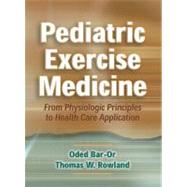
| Preface | ix | ||||
| Acknowledgments | xi | ||||
| Credits | xiii | ||||
|
|||||
|
3 | (58) | |||
|
4 | (1) | |||
|
4 | (1) | |||
|
5 | (2) | |||
|
7 | (5) | |||
|
12 | (6) | |||
|
18 | (1) | |||
|
19 | (3) | |||
|
22 | (1) | |||
|
23 | (8) | |||
|
31 | (4) | |||
|
35 | (2) | |||
|
37 | (1) | |||
|
38 | (1) | |||
|
39 | (1) | |||
|
40 | (4) | |||
|
44 | (2) | |||
|
46 | (4) | |||
|
50 | (8) | |||
|
58 | (1) | |||
|
58 | (3) | |||
|
61 | (8) | |||
|
61 | (1) | |||
|
62 | (1) | |||
|
62 | (2) | |||
|
64 | (1) | |||
|
65 | (1) | |||
|
66 | (3) | |||
|
69 | (36) | |||
|
69 | (1) | |||
|
70 | (1) | |||
|
71 | (1) | |||
|
71 | (2) | |||
|
73 | (4) | |||
|
77 | (2) | |||
|
79 | (3) | |||
|
82 | (1) | |||
|
82 | (2) | |||
|
84 | (1) | |||
|
84 | (7) | |||
|
91 | (8) | |||
|
99 | (2) | |||
|
101 | (4) | |||
|
|||||
|
105 | (12) | |||
|
105 | (1) | |||
|
106 | (1) | |||
|
107 | (1) | |||
|
107 | (3) | |||
|
110 | (1) | |||
|
111 | (1) | |||
|
112 | (2) | |||
|
114 | (1) | |||
|
114 | (3) | |||
|
117 | (22) | |||
|
118 | (3) | |||
|
121 | (1) | |||
|
122 | (7) | |||
|
129 | (2) | |||
|
131 | (1) | |||
|
132 | (7) | |||
|
|||||
|
139 | (38) | |||
|
139 | (22) | |||
|
161 | (1) | |||
|
162 | (15) | |||
|
177 | (42) | |||
|
177 | (16) | |||
|
193 | (5) | |||
|
198 | (1) | |||
|
199 | (7) | |||
|
206 | (4) | |||
|
210 | (3) | |||
|
213 | (6) | |||
|
219 | (18) | |||
|
219 | (13) | |||
|
232 | (1) | |||
|
233 | (4) | |||
|
237 | (32) | |||
|
237 | (3) | |||
|
240 | (23) | |||
|
263 | (6) | |||
|
269 | (36) | |||
|
269 | (13) | |||
|
282 | (1) | |||
|
282 | (4) | |||
|
286 | (2) | |||
|
288 | (3) | |||
|
291 | (1) | |||
|
292 | (2) | |||
|
294 | (7) | |||
|
301 | (4) | |||
|
305 | (18) | |||
|
305 | (8) | |||
|
313 | (1) | |||
|
314 | (1) | |||
|
315 | (2) | |||
|
317 | (6) | |||
|
323 | (14) | |||
|
324 | (1) | |||
|
325 | (3) | |||
|
328 | (8) | |||
|
336 | (1) | |||
| Appendix I Norms | 337 | (6) | |||
| Appendix II Procedures for Exercise Testing in Children | 343 | (24) | |||
| Appendix III Methods of Determining Physical Activity and Energy Expenditure | 367 | (14) | |||
| Appendix IV Energy Expenditure During Various Activities and Sports When Performed by Children and Adolescents | 381 | (2) | |||
| Appendix V Scaling for Size Differences | 383 | (4) | |||
| Appendix VI Glossary of Terms | 387 | (2) | |||
| References | 389 | (94) | |||
| Index | 483 | (18) | |||
| About the Authors | 501 |
The New copy of this book will include any supplemental materials advertised. Please check the title of the book to determine if it should include any access cards, study guides, lab manuals, CDs, etc.
The Used, Rental and eBook copies of this book are not guaranteed to include any supplemental materials. Typically, only the book itself is included. This is true even if the title states it includes any access cards, study guides, lab manuals, CDs, etc.